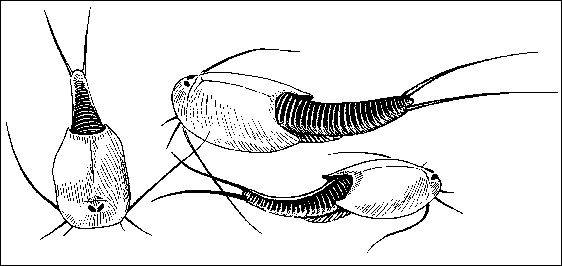
Mother Nature has a fabulous recipe. Take one small depression in the desert floor capable of holding water after a downpour, add rain, and wait for 2 or 3 days. What do you get? Tiny larvae that quickly grow into one of the most fascinating desert animals you've ever seen—a Triops, or Tadpole Shrimp. This prehistoric-looking animal, growing to an inch and a half or so long, has been mistaken by many a person for a trilobite belonging back in the days before dinosaurs--and virtually identical animals were indeed swimming around back in those days.
What's a shrimp doing in the desert, you may well ask. It's
simply living the life Mother Nature intended. These are not animals of the sea, but
instead are wonderfully adapted to short-lived desert pools, exist on almost any food
and, of course, lay eggs. Eggs that may stay in dried-out mud for years if necessary
until water arrives; then they hatch and restart the cycle destiny has prescribed for
them. 
Listen to the Audio (mp3 format) as recorded by KTEP, Public Radio for the Southwest.
Contributor: Arthur H. Harris, Laboratory for Environmental Biology, Centennial Museum, University of Texas at El Paso.
Desert Diary is a joint production of the Centennial Museum and KTEP National Public Radio, University of Texas at El Paso.

Drawing of Triops longicaudus. © 1999 by Zackery Zdinak.
A number of commercial companies sell kits for raising Triops—a good project for classroom or home.
Triops cancriformis, a living fossil.